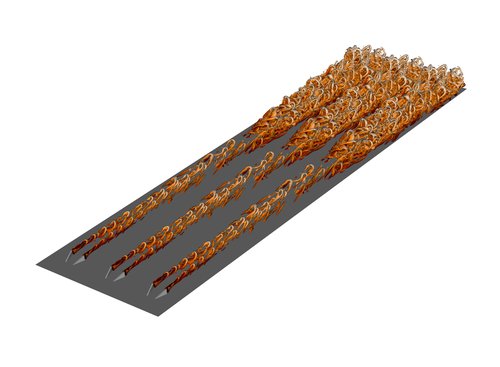It is still considered a remarkable fact that three-dimensional coherent motion develop in fluid flows at Reynolds numbers much smaller than the critical value for the rise of two-dimensional instabilities. This behaviour is recovered in simple parallel flows, such as pipes, boundary layers and channels, which are prone to subcritical transition, as well as in wall-bounded or open flows around solid objects of complex geometry, such as the flow over a roughness element or a wall cavity, but also in fully turbulent flows, in which three-dimensional coherent structures such as streaks and hairpin vortices are repeatedly observed. For the case of parallel flows, the arising of three-dimensional coherent structures and the consequent transition to turbulence has been recently interpreted on the basis of a simplified self-sustained cycle relying on simple modal and non-modal energy growth mechanisms, coupled through non-linearity. This self-sustained cycle has proven to be able to explain recurrent exact coherent structures of different type (equilibria, periodi orbit, and chaotic motions) which appear to form the backbone of transition. However, it is still unclear if and how this simplified theory can be extended to the case of fully turbulent flows, where coherent structures develop on top of random, chaotic fluctuations at different (outer and inner) scales, or even to the case of more complex flows in which the laminar solution is far from being parallel, such as three-dimensional flows around solid objects. In these particular cases, three-dimensional modal or non-modal instability might develop and interact with each other, potentially sharing some features with the self-sustained coherent structures found for the more simple parallel flows.
The purpose of this colloquium is be to bring together researchers studying the rise and development of instability mechanisms leading to three-dimensional flow structures in different shear flows, with the aim of trying to find some common features between the structures triggering or sustaining turbulence in such different cases. The deep knowledge of exact coherent structures in parallel flows, as well as the recent possibility of performing instability analysis on complex three-dimensional or fully turbulent flows begin to make possible the achievement of such an ambitious goal.

